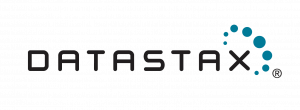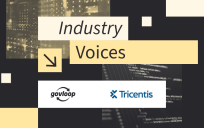This blog post was written in partnership with DataStax.
Your agency has decided to move to the hybrid cloud, realizing it’s one of the most effective ways to make better, data-driven decisions. While the decision has been made, figuring out next steps can be tricky. What are some best practices to follow?
The first thing to consider is exactly what your agency needs from the cloud; agencies must take the critical first step of clearly outlining what they need and expect. Moving an application to the cloud isn’t necessarily the main idea; instead, the focus should be on how modernization could improve the effectiveness and efficiency of the organization.
“Moving something to the cloud by itself doesn’t actually provide any real benefit,” Brian Shealey, Enterprise Sales Manager in the Federal/DoD space for DataStax, a leader in hybrid cloud database transformation, said in an interview with GovLoop. “Modernizing the approach of the agency and simplifying access to systems underscores the purpose of the cloud: to provide a more agile way of building, improving and scaling mission-central applications.”
Agencies can use the umbrella term of modernization as an opportunity to rationalize applications and optimize business process integration. Instead of haphazardly placing an application in the cloud, they can get the full benefits of the cloud by looking at functionality to better meet the needs of their user base.
“The best practice that we’ve seen is architecting in a way that provides flexibility, security, and scalability,” Shealey said. “Basically, architect for the unknown.”
Architecting for the unknown in terms of hybrid cloud, in one way, simply means being flexible. Just because an agency is headed down one path now doesn’t mean that path isn’t going to veer or that it might have additional paths to address in its application architectures.
This means that another best practice to consider is developing requirements based on agency needs and security levels. This involves translating legacy systems into cloud-based ones. There are a lot of internal policies to consider, such as agency, security, or public policies, that are driving the way things need to be architected to meet current and future needs and standards for what the agency wants to accomplish. Then the agency has to consider data, which is the hardest part to get right, according to Shealey.
“Having a data layer in your application architectures that can scale, that is secure by design, that supports various formats of data, that supports things that not only exist today but also could exist in the future, is important,” Shealey said. “You need to think bigger than the picture presented to you.”
DataStax Enterprise powers agencies with an always-on, distributed cloud database built on Apache Cassandra and designed for hybrid cloud. As a foundation for real-time applications at massive scale, the DataStax Enterprise makes it possible for agencies to exceed expectations through user and enterprise applications that provide responsive and meaningful engagement citizens wherever they go.
DataStax Enterprise gives agencies full data autonomy, allowing them to retain control and strategic ownership of their most valuable asset in a hybrid cloud world – and architect for the present, the future, and any unknown that comes their way.
To learn more, head to DataStax.com.






Leave a Reply
You must be logged in to post a comment.